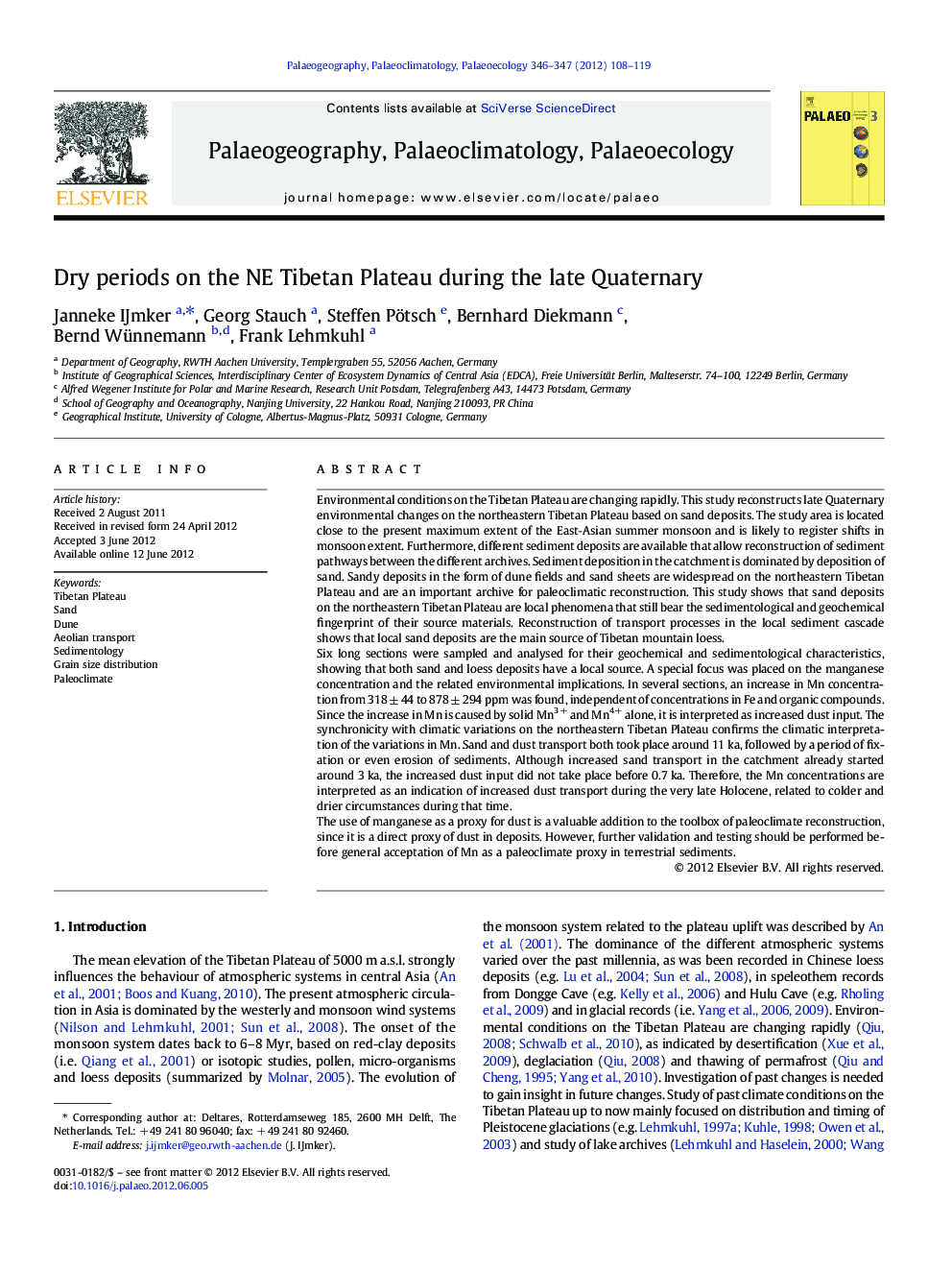| کد مقاله | کد نشریه | سال انتشار | مقاله انگلیسی | نسخه تمام متن |
|---|---|---|---|---|
| 4466845 | 1622227 | 2012 | 12 صفحه PDF | دانلود رایگان |

Environmental conditions on the Tibetan Plateau are changing rapidly. This study reconstructs late Quaternary environmental changes on the northeastern Tibetan Plateau based on sand deposits. The study area is located close to the present maximum extent of the East‐Asian summer monsoon and is likely to register shifts in monsoon extent. Furthermore, different sediment deposits are available that allow reconstruction of sediment pathways between the different archives. Sediment deposition in the catchment is dominated by deposition of sand. Sandy deposits in the form of dune fields and sand sheets are widespread on the northeastern Tibetan Plateau and are an important archive for paleoclimatic reconstruction. This study shows that sand deposits on the northeastern Tibetan Plateau are local phenomena that still bear the sedimentological and geochemical fingerprint of their source materials. Reconstruction of transport processes in the local sediment cascade shows that local sand deposits are the main source of Tibetan mountain loess.Six long sections were sampled and analysed for their geochemical and sedimentological characteristics, showing that both sand and loess deposits have a local source. A special focus was placed on the manganese concentration and the related environmental implications. In several sections, an increase in Mn concentration from 318 ± 44 to 878 ± 294 ppm was found, independent of concentrations in Fe and organic compounds. Since the increase in Mn is caused by solid Mn3+ and Mn4+ alone, it is interpreted as increased dust input. The synchronicity with climatic variations on the northeastern Tibetan Plateau confirms the climatic interpretation of the variations in Mn. Sand and dust transport both took place around 11 ka, followed by a period of fixation or even erosion of sediments. Although increased sand transport in the catchment already started around 3 ka, the increased dust input did not take place before 0.7 ka. Therefore, the Mn concentrations are interpreted as an indication of increased dust transport during the very late Holocene, related to colder and drier circumstances during that time.The use of manganese as a proxy for dust is a valuable addition to the toolbox of paleoclimate reconstruction, since it is a direct proxy of dust in deposits. However, further validation and testing should be performed before general acceptation of Mn as a paleoclimate proxy in terrestrial sediments.
► Sand deposits on the Tibetan Plateau are widespread but descriptions are limited.
► Sand and loess on the NE Tibetan Plateau mainly originate from local sources.
► Local sources are alluvial fan, former lake and floodplain systems.
► Manganese is a proxy for dust input into sand deposits in the study area.
► Our data show that the Little Ice Age on the Tibetan Plateau was cold and dry.
Journal: Palaeogeography, Palaeoclimatology, Palaeoecology - Volumes 346–347, 15 August 2012, Pages 108–119